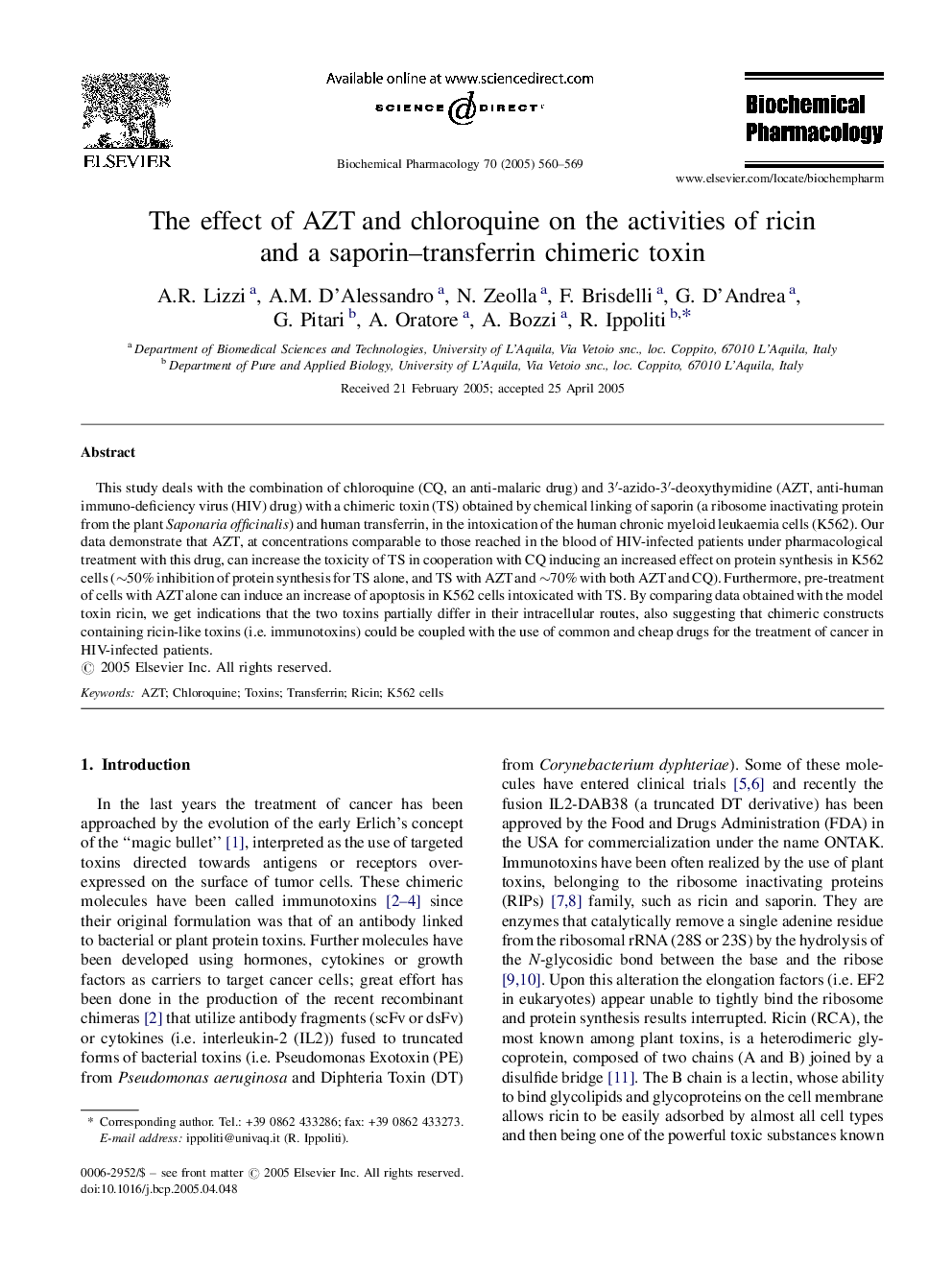| Article ID | Journal | Published Year | Pages | File Type |
|---|---|---|---|---|
| 9001812 | Biochemical Pharmacology | 2005 | 10 Pages |
Abstract
This study deals with the combination of chloroquine (CQ, an anti-malaric drug) and 3â²-azido-3â²-deoxythymidine (AZT, anti-human immuno-deficiency virus (HIV) drug) with a chimeric toxin (TS) obtained by chemical linking of saporin (a ribosome inactivating protein from the plant Saponaria officinalis) and human transferrin, in the intoxication of the human chronic myeloid leukaemia cells (K562). Our data demonstrate that AZT, at concentrations comparable to those reached in the blood of HIV-infected patients under pharmacological treatment with this drug, can increase the toxicity of TS in cooperation with CQ inducing an increased effect on protein synthesis in K562 cells (â¼50% inhibition of protein synthesis for TS alone, and TS with AZT and â¼70% with both AZT and CQ). Furthermore, pre-treatment of cells with AZT alone can induce an increase of apoptosis in K562 cells intoxicated with TS. By comparing data obtained with the model toxin ricin, we get indications that the two toxins partially differ in their intracellular routes, also suggesting that chimeric constructs containing ricin-like toxins (i.e. immunotoxins) could be coupled with the use of common and cheap drugs for the treatment of cancer in HIV-infected patients.
Related Topics
Health Sciences
Pharmacology, Toxicology and Pharmaceutical Science
Pharmacology
Authors
A.R. Lizzi, A.M. D'Alessandro, N. Zeolla, F. Brisdelli, G. D'Andrea, G. Pitari, A. Oratore, A. Bozzi, R. Ippoliti,
